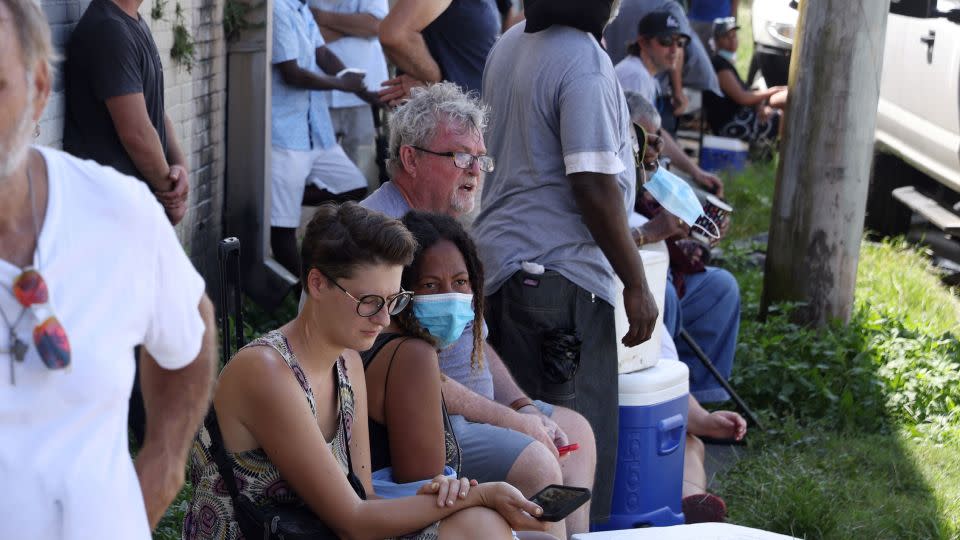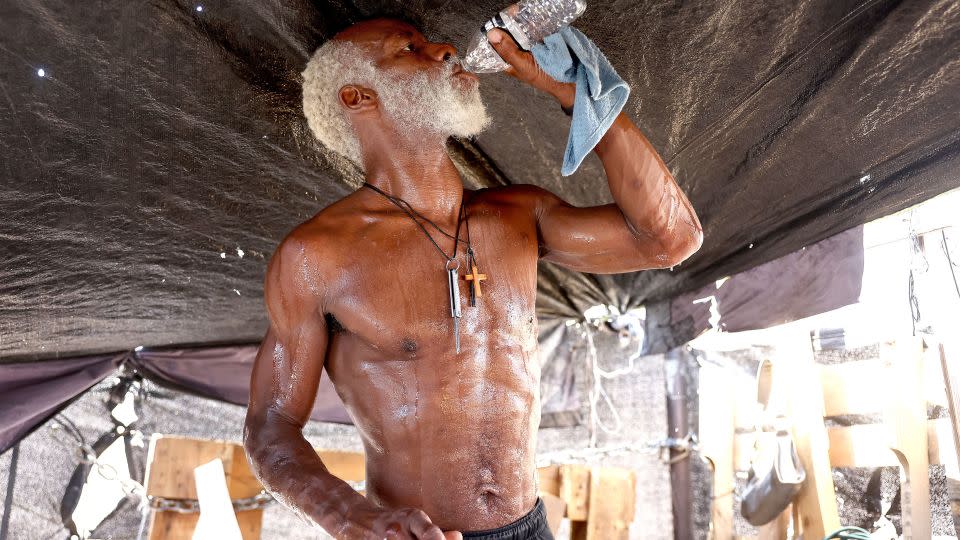When Hurricane Ida slammed into Louisiana in August 2021 with catastrophic flooding and high winds, more than 1 million people were left without power. Then came the heat wave. Temperatures soared above 90 degrees Fahrenheit — a blow to those who were sweltering in their homes and unable to turn on air conditioning as power outages lasted for days.
The heat was deadliest in New Orleans, responsible for at least nine of the city’s 14 hurricane-related deaths.
The combination of a hurricane, a heat wave and a multi-day power outage is a nightmare scenario, but it’s one that will become increasingly common as humans continue to heat the planet and unleash devastating extreme weather events. And it exposes an inconvenient truth about the fragility of humanity’s ultimate defense against heat: air conditioning.
Air conditioning is far from perfect. It guzzles energy, much of which still comes from fossil fuels that are warming the planet, meaning it actually exacerbates the problem it is supposed to solve. What’s more, it is only available to those who can afford it, further increasing social inequality.
But it is also a lifeline against increasingly brutal heat, the deadliest type of extreme weather. It allows people to live in places where temperatures are close to the limits of survival and where extreme heat persists even at night.
Demand for air conditioning is skyrocketing and is expected to triple globally by 2050 as global temperatures rise and incomes increase.
The problem is that without electricity, access to air conditioning is lost. And many electrical grids are being pushed to the breaking point by increasingly frequent extreme weather and rising demand for cooling.
According to a report from Climate Central, a nonprofit research group, weather was responsible for 80% of major power outages in the U.S. between 2000 and 2023. “Every aspect of weather pounds the already fragile grid and really tests it,” said Jen Brady, a senior data analyst at Climate Central.
In the United States, the aging electrical grid was designed “for the weather of the past, rather than the weather of the future,” said Michael Webber, a professor of mechanical engineering at the University of Texas at Austin.
The biggest threat is storms, which can knock down power lines and poles. But heat also has an impact. When it’s really hot, the system works less efficiently. Webber compares it to how someone feels when they run a marathon in the heat: “We just collapse.” The grid can also buckle under the pressure of demand, as everyone cranks up their air conditioning at the same time to cope with the high temperatures.
The number of major outages in the U.S. — those affecting more than 50,000 customers and lasting at least an hour — doubled between 2017 and 2020, said Brian Stone Jr., a professor specializing in urban environmental planning and design at the Georgia Institute of Technology. “Most of the increase is in the summer months, which tells me these systems are not resilient,” he told CNN.
Rising demand for cooling during a heat wave in California in August 2020 prompted the state’s grid operator to cut power to hundreds of thousands of homes for the first time in 20 years.
In 2021, during the scorching heat wave that hit the Pacific Northwest, electrical equipment failed due to the heat, causing power outages for tens of thousands of people and temperatures soaring above 100 degrees Fahrenheit.
It’s not just the U.S. that’s struggling. In June, when temperatures in southern Europe soared above 104 degrees Fahrenheit, parts of Albania, Bosnia, Croatia and Montenegro experienced hours-long blackouts as demand for electricity surged.

Even short power outages can be dangerous. “If the grid goes down during a heat wave, it quickly goes from uncomfortable to deadly,” Webber said.
Heat can damage vital organs and cause heat exhaustion, heat stroke and even death. If the power goes out in very cold weather, people can put on layers of clothing, build fires and huddle together. “When it gets really hot, there’s only one way to cool down, and that’s with electricity,” Webber said.
The combination of a heat wave and power outages “is the deadliest climate-related event we can imagine,” Stone said.
He and a team of scientists investigated the potential impacts of a heat wave that coincided with a multi-day power outage due to extreme weather or a cyberattack. They focused on Atlanta, Detroit and Phoenix, looking at exposure in people’s homes, a leading cause of heat-related illness during a power outage.
The numbers were particularly dire for Phoenix. During a three- to four-day heat wave and a power outage, half the city’s population — nearly 800,000 people — would require hospital treatment for heat-related illnesses, the findings showed. More than 13,000 people would die.
A power outage in Phoenix is causing a “very dramatic shift in heat illness,” Stone said, because the city’s climate is so extreme and people have a hard time adapting. In an unfortunate irony, widespread air conditioning may actually make residents less resilient because they’re so used to cooling in their homes and workplaces, Stone said.
Phoenix officials say the city is well prepared. Kate Gallego, the city’s mayor, said Stone’s study was based on an extremely unlikely scenario. “The study does not take into account existing emergency response plans or the fact that our electrical grid has consistently been among the most reliable in the country,” Gallego told CNN.
Arizona Public Service, one of the energy companies that supplies power in Phoenix, said it has robust plans in place to prevent widespread outages and regularly maintains the grid.
Stone said that while the chances of a combined multi-day power outage and heat wave in Phoenix are small, it is still possible and becoming more likely as the climate crisis worsens.


Stone says the best long-term defense against heat and extreme weather is to drastically reduce the pollution that causes global warming. But the world is already prepared for decades of rising temperatures.
In the shorter term, there are ways to mitigate vulnerabilities.
Making the grid more robust and resilient is one, Stone said. That includes repairs and upgrades that take into account the climate of the future. Expanding and modernizing the grid, including adding more power plants and ensuring a diverse supply of energy sources, will also help strengthen it, Webber said.
“But we also have to recognize that those networks are going to go down, and they’re going to go down more and more, so we have to have a contingency plan,” Stone said.
That means rethinking cities, where heat-trapping concrete, steel and asphalt have replaced trees. Designing urban areas to be greener and cooler “can really increase the resilience of the grid without investing in the grid itself,” he said.
Climate Central’s Brady pointed to community solar projects, which can keep local power going when the grid goes down. Babcock Ranch in Florida — “America’s first solar town” — managed to keep the lights on when Hurricane Ian ripped through in 2022, unlike nearby towns.
Making homes more efficient will also help, Webber said. Homes that are better adapted to extreme weather can help reduce demand for electricity as temperatures rise.
Ultimately, “we’re vulnerable because we’ve built our lives around conditioned air,” said Webber, who lives in places where life would be impossible without it. The stress that extreme weather puts on the grid shows that “climate change is here and we have to deal with it.”
For more CNN news and newsletters, create an account at CNN.com